iOS 17.4 Emoji Changelog
Today Apple has released its latest emoji update, introducing 118 new emojis including a phoenix, a lime, several gender-neutral family designs, and various direction-specific people emojis.
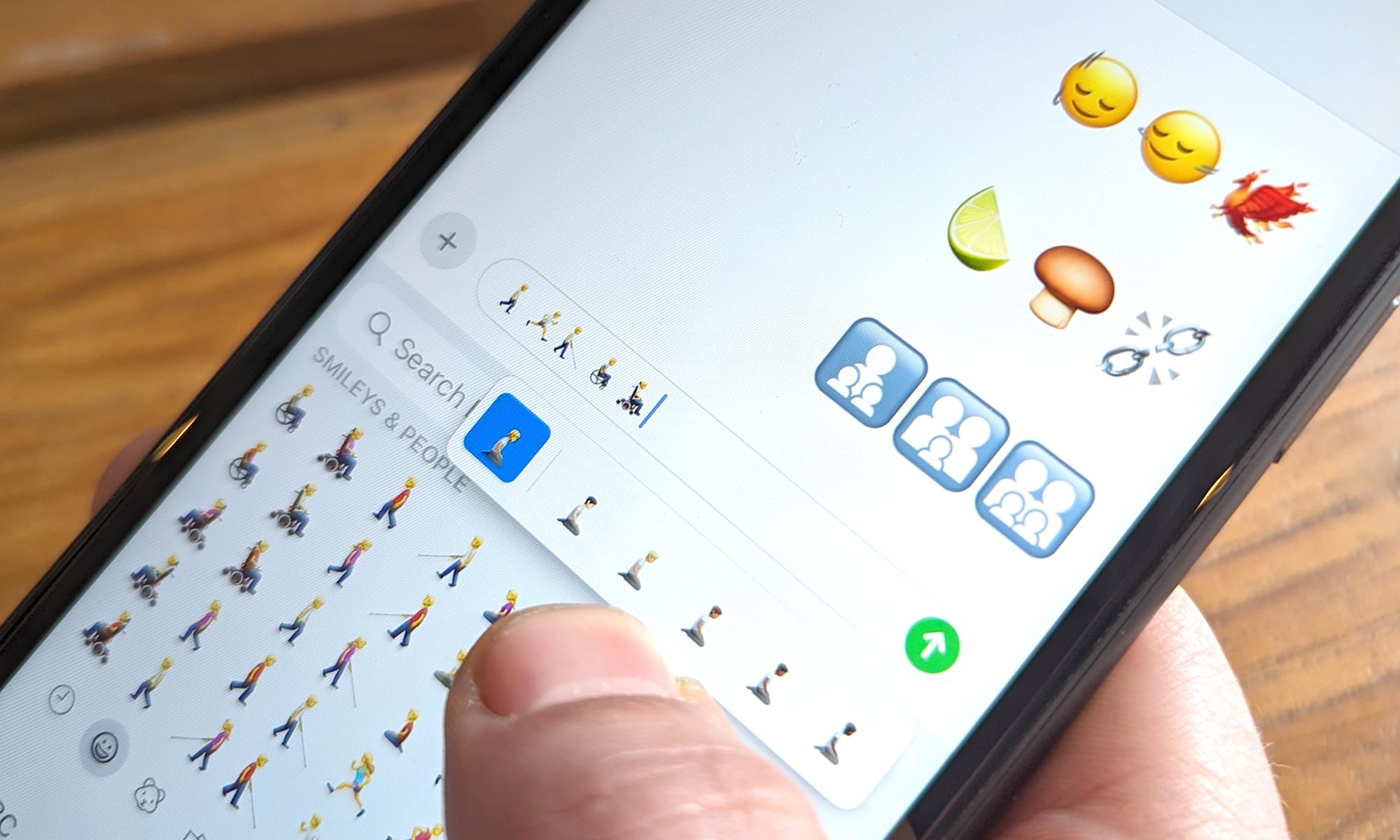
Today Apple has released its latest emoji update, introducing 118 new emojis including a phoenix, a lime, several gender-neutral family designs, and various direction-specific people emojis.
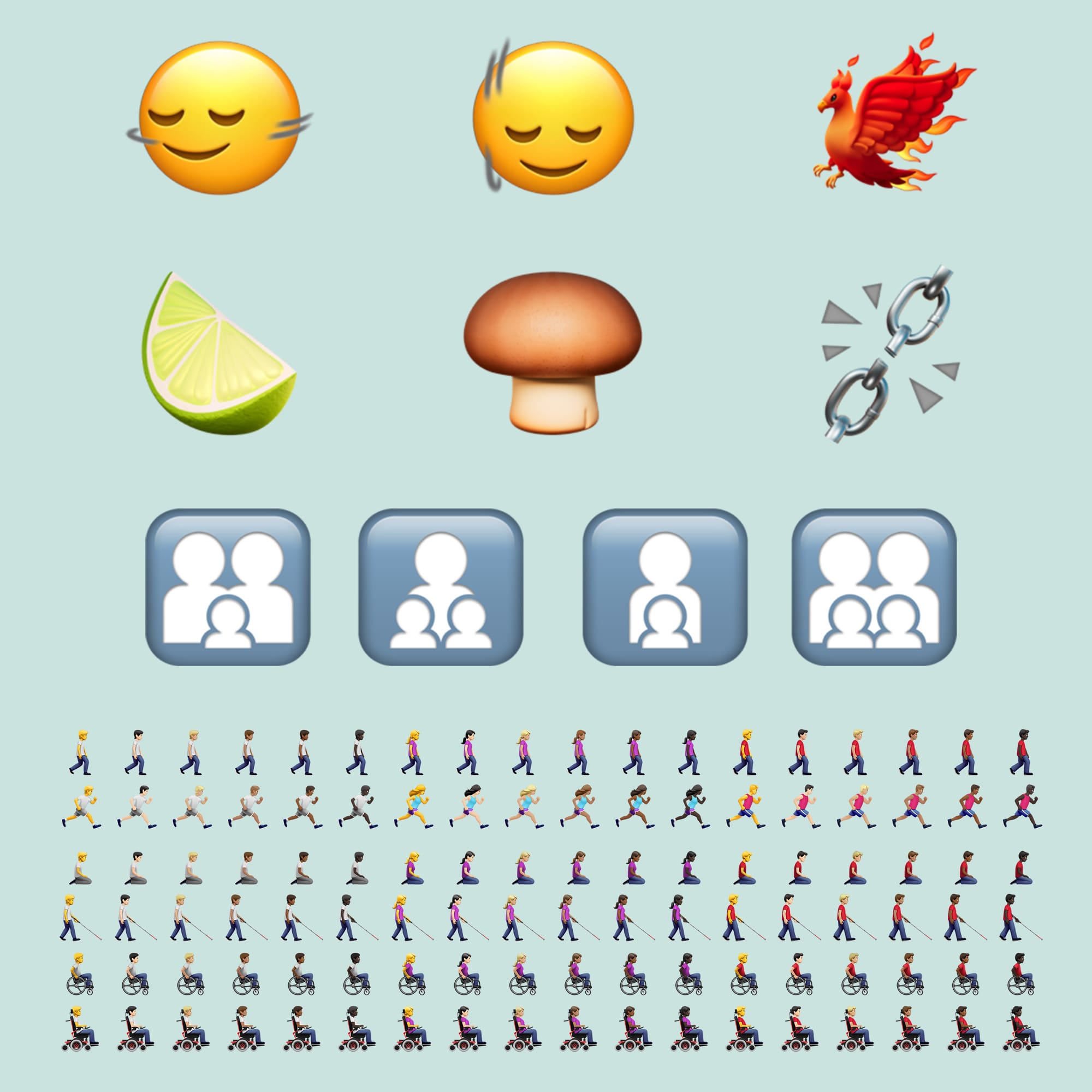
These new emojis arrived in today's release of iOS 17.4 for the iPhone and iPadOS 17.4.
In addition to these 118 new emoji designs, today's Apple emoji update also changes 26 different family emoji designs to follow recent Unicode recommendations and match the style of the new gender-neutral family emoji designs added in iOS 17.4.
All of the 118 new emojis were recommended in September 2023's Emoji 15.1 list, with no emojis' designs changing during the beta process for iOS 17.4.
🆕 New in iOS 17.4
As previewed with the release of the first iOS 17.4 beta back in January, the new 118 additions consist of:
- six brand new emoji concepts,
- four new non-gender-specifying family emojis,
- 108 new direction-specifying variations of six different previous-available people emojis
Amongst the six brand-new emoji concepts, two are within the Smileys category: a 🙂↔️ Head Shaking Horizontally and a 🙂↕️ Head Shaking Vertically.
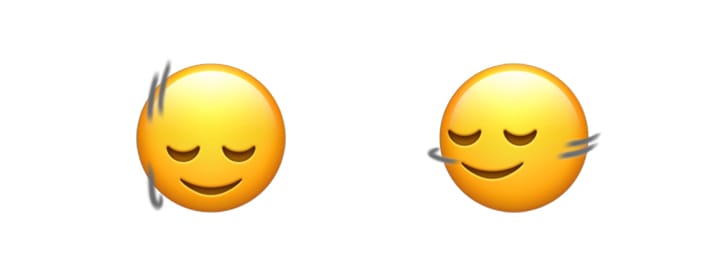
There are also two new additions to the Food & Drink category: a 🍋🟩 Lime and a🍄🟫 Brown Mushroom.
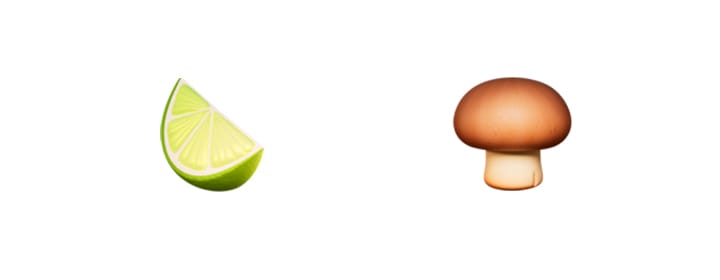
The 🍋🟩 Lime has been a popular emoji request for several years, while the color-specifying 🍄🟫 Brown Mushroom is a common ingredient in many global foods, in contrast to the existing 🍄 Mushroom emoji with its red color and white spots.
The last of the new concepts are a ⛓️💥 Broken Chain and a 🐦🔥 Phoenix.
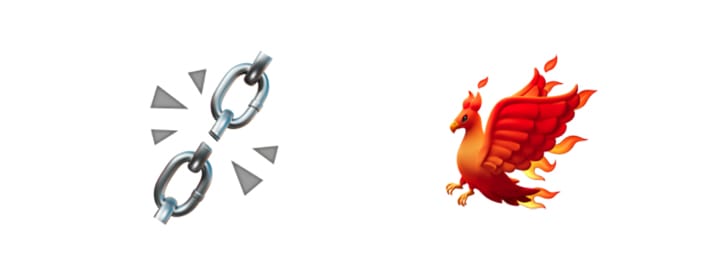
The four new family emojis are:
- 🧑🧑🧒 Family: Adult, Adult, Child
- 🧑🧒🧒 Family: Adult, Child, Child
- 🧑🧒 Family: Adult, Child
- 🧑🧑🧒🧒 Family: Adult, Adult, Child, Child
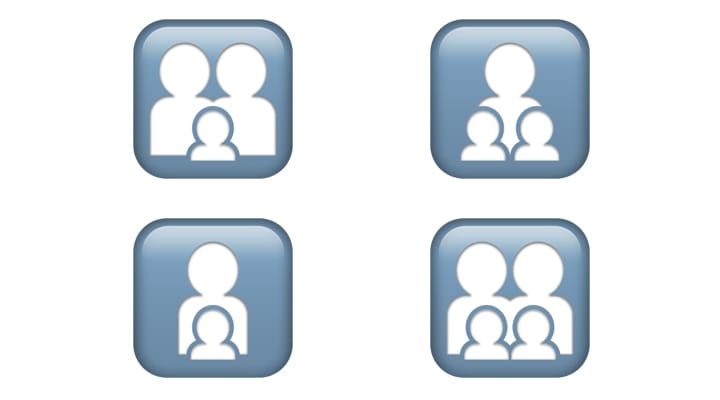
These new family emojis are distinct from those previously available on Apple devices as they are constructed from gender-neutral people emojis (i.e. 🧑 Person and 🧒 Child) as opposed to gender-specific people emojis (e.g. 👩 Woman, 👨 Man, 👧 Girl, and 👦 Boy).
Finally, this Apple emoji update also includes 108 new people emoji designs to enable both gender and skin tone support to new direction-specifying versions of previously released emoji concepts.
- 🚶➡️ Person Walking Facing Right
- 🏃➡️ Person Running Facing Right
- 🧎➡️ Person Kneeling Facing Right
- 🧑🦯➡️ Person with White Cane Facing Right
- 🧑🦽➡️ Person in Manual Wheelchair Facing Right
- 🧑🦼➡️ Person in Motorized Wheelchair Facing Right
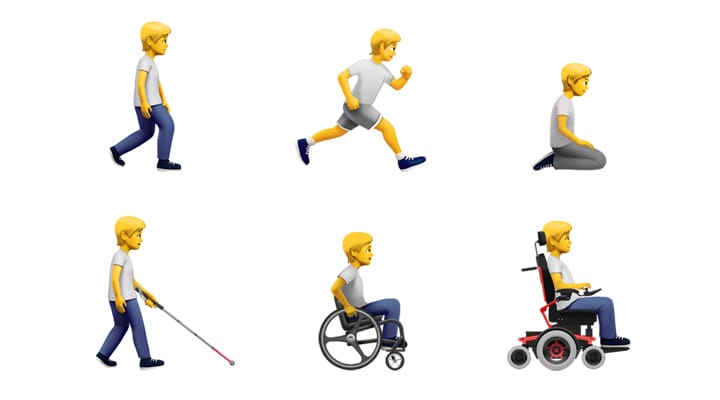
As was the case in the first iOS 17.4 beta, the alternative-direction emoji characters are accessible alongside their left-facing counterparts within the "People" section of the Apple emoji keyboard.
As expected, a bug detected with selecting these alternative-direction people emojis was resolved during the iOS 17.4 beta testing process.
➕ Why am I seeing two or more emojis?
Apple users who have yet to update to today's iOS 17.4 will see the new emojis with their correct designs, but they won't see an unknown character symbol either.
Instead, they will be displayed as multiple emoji designs placed in a row. For example, the 🐦🔥 Phoenix will appear as the 🐦Bird and 🔥Fire emojis placed side-by-side, while the 🍋🟩 Lime will show as a 🟩Green Square placed after the 🍋Lemon emoji.
This is because like with 2019's Emoji 12.1 and 2020's Emoji 13.1, each of the new emojis from Emoji 15.1 are constructed via zero-width joiner (ZWJ) sequences - sequences that use previously-existing emojis to render a new emoji design on eligible devices.
🆕 Changed in iOS 17.4
As mentioned above, each of the previous-released family emoji designs have been revised with the release of iOS 17.4.
Instead of displaying colorful people emojis alongside one another, all of the family emojis now display different combinations of white non-gender-indicative silhouettes overlayed on a grey square icon.
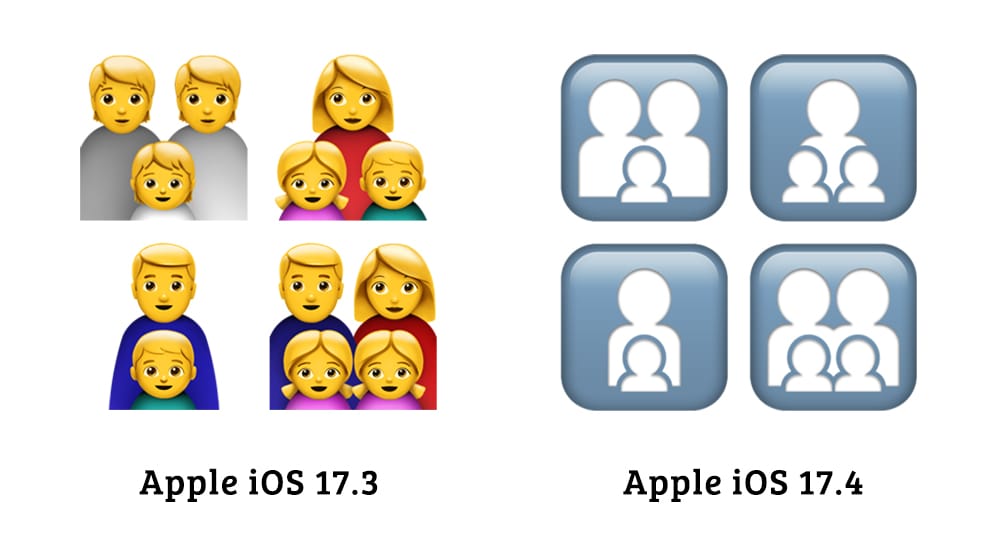
This change has been made in the name of complying with a recommendation made by Unicode's Emoji Subcommittee in October 2022, which proposed that all emoji vendors update their family emoji designs to display with a silhouette design.
This recommendation was made in the name of making the recommended set of family emojis fully in keeping with Unicode's people emoji policies without requiring vendors to add over 7,000 additional emoji designs to support different skin tone variations - an option that was assessed but ultimately decided against in early 2020 alongside several other alternative proposals.
Supporting all 7,230 proposed RGI sequences proves to be challenging for several reasons including but not limited to:
● Data structure and asset growth and their on-disk size impact
● UI design enabling the selection of each family members’ skin tone
● Workload required to bring support can be overwhelming for independent developers
For context, as of Emoji 15.1, there are 3,782 emojis recommended for general interchange (RGI).
Therefore providing full-scale skin tone support for all individual people featured within the existing recommended family sequences would have increased the number of emoji designs required to be supported within the vendor's emoji font files by almost twofold (3,782 emojis vs 11,012 emojis).
This silhouette-like design change to all the existing family emoji designs was previously outlined by ourselves here at Emojipedia. In suggesting this option, our former Chief Emoji Officer Jeremy Burge surmised that:
Silhouettes might please no-one, but at least they might displease everyone equally.
Notable, this recommendation from Unicode was implemented in the latest Google Noto Color emoji update while still maintaining a gendered appearance for previously released family emojis.
For example, the 👨👩👧👦 Family: Man, Woman, Girl, Boy emoji displays gender-indicative hairstyles for the 👩 Woman and 👧 Girl emoji silhouettes.
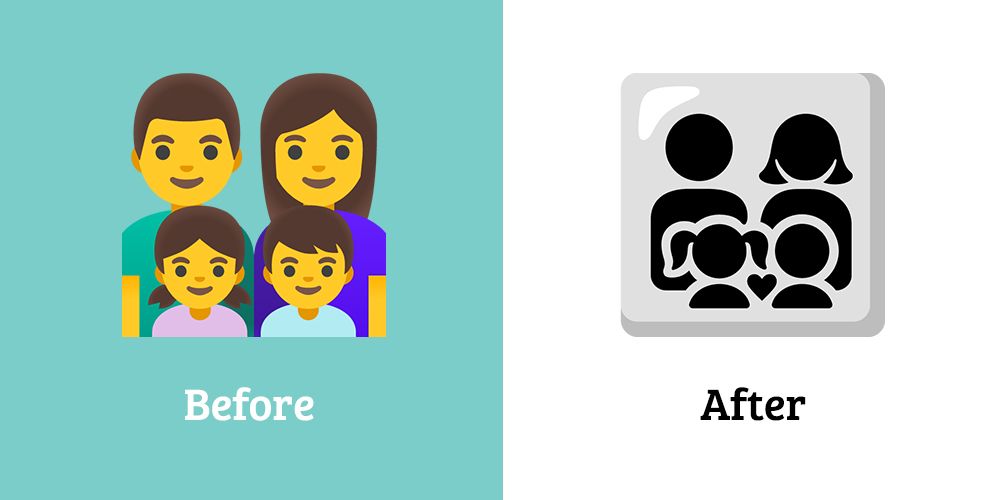
Instead of following this route, however, Apple has removed any gender-indicative design elements for any of their family emojis.
Therefore all of the family emoji sequences will be represented by one of the four designs shared with the new family emojis added in today's iOS 17.4 update.
Meanwhile, Samsung did not convert any of its previously released family emoji designs into silhouette symbols despite releasing the new Emoji 15.1 family emojis in this style, nor did WhatsApp. These vendors are both expected to follow suit in future emoji updates.
📋 The Emoji Subcommittee & Design Changes
While the Emoji Subcommittee's primary function is to recommend new emojis after assessing proposals, it can also make recommendations to make changes to previously released emoji designs. Such recommendations are, however, very rare.
The last instance Unicode made a formal recommendation for previous-released emoji designs to be broadly changed by all vendors was in 2018 when it was recommended that people emojis without a specified gender (e.g. 🧜 Merperson) be represented with a distinct design as opposed to sharing their design with one of the two existing gender variations of that emoji (e.g. 🧜♀️ Mermaid or 🧜♂️ Merman).

Generally speaking, when an emoji design is changed within an emoji update, the change has been made at an individual vendor's discretion. For example, Unicode did not instruct Samsung to undertake a considerable redesign of its emoji design set in October 2023.
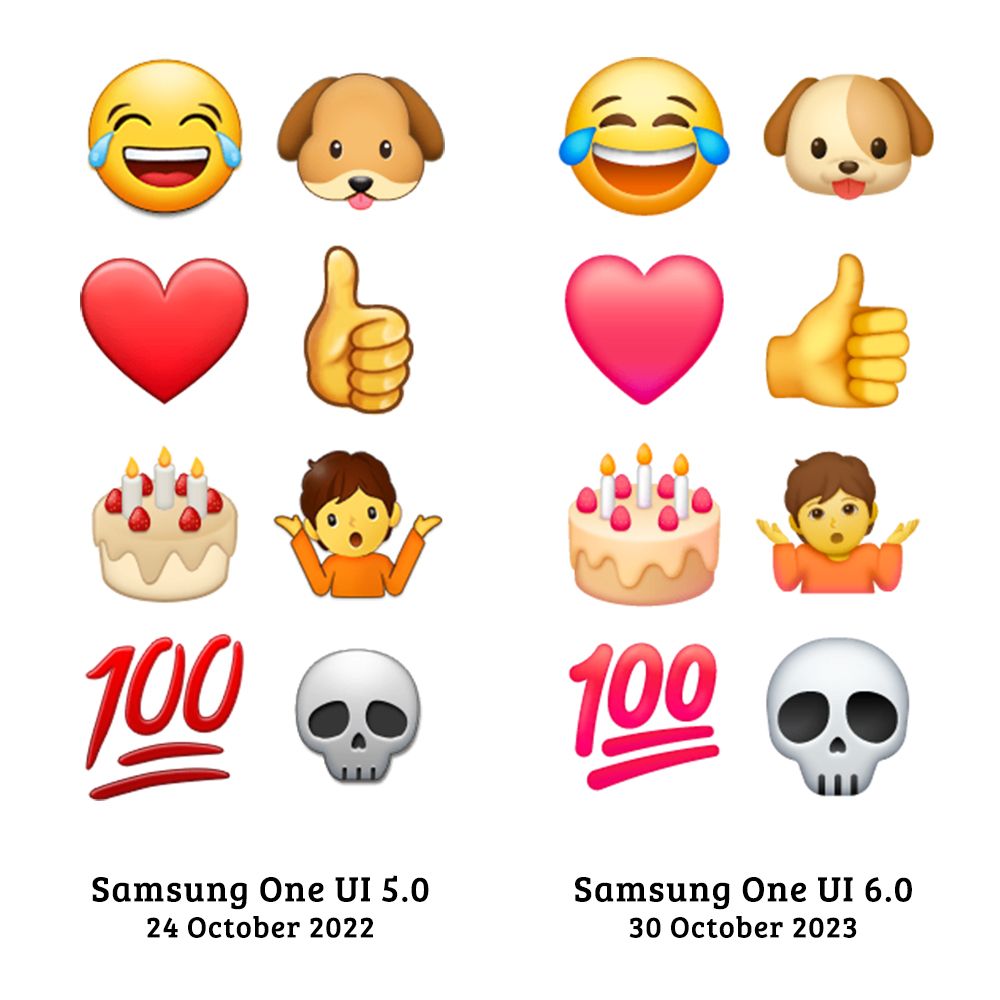
That's not to say, however, that vendors do not discuss possible changes amongst themselves in the name of design convergence, or have not had their hands gentled forced by Unicode in other ways.
For example, while not formally recommended by Unicode, in early 2021 several vendors took it upon themselves to update their 💉 Syringe emoji designs to remove the blood and therefore make the emoji more appropriate for discussions related to vaccination.
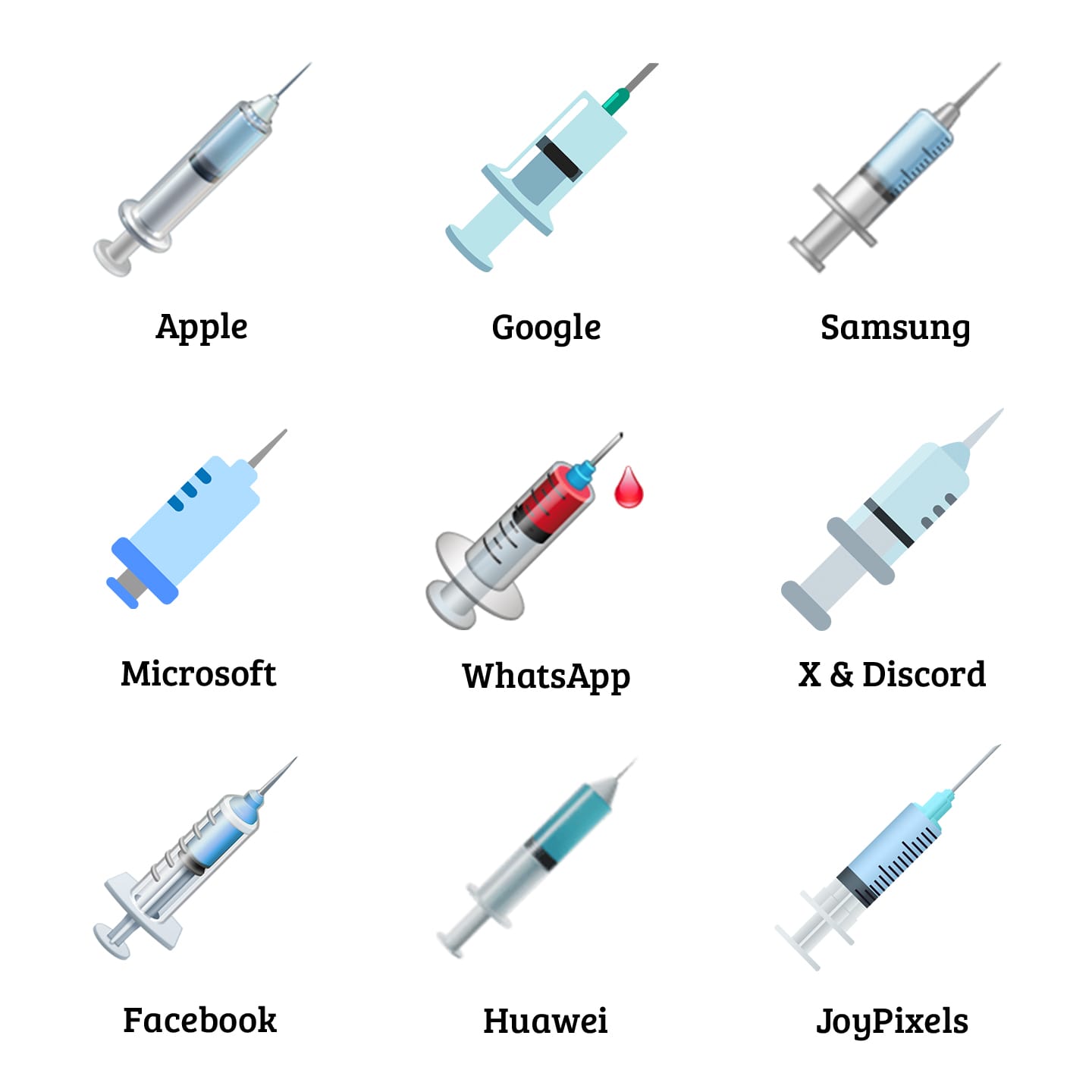
While the majority of vendors followed suit, not all have: at the time of writing, WhatsApp still displays blood in the barrel of the syringe.
Additionally, while Apple and Facebook were not formally requested to change the design of their 🤭 Face with Hand Over Mouth emoji, the introduction of the eye-state-specifying 🫢 Face with Open Eyes and Hand Over Mouth emoji in 2021's Emoji 14.0 recommendations nudged them into doing so.
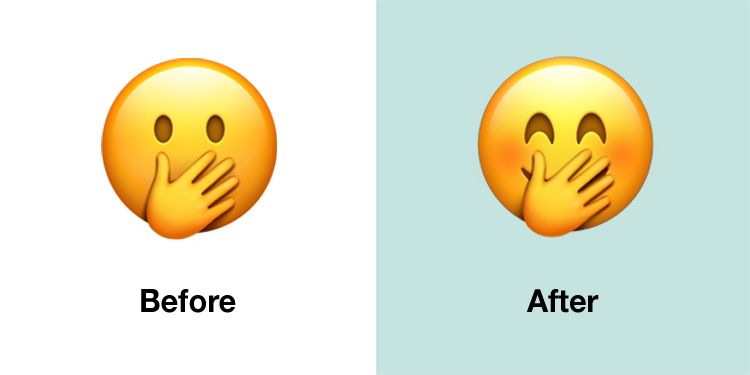
You can read more about Apple updating the 🤭 Face with Hand Over Mouth in our iOS 15.4 Emoji Changelog from March 2022.
📲 Release
iOS 17.4 is available now as a free software update for the following Apple devices:
- iPhone 15 / iPhone 15 Plus / iPhone 15 Pro / iPhone 15 Pro Max
- iPhone 14 / iPhone 14 Plus / iPhone 14 Pro / iPhone 14 Pro Max
- iPhone 13 / iPhone 13 mini / iPhone 13 Pro / iPhone 13 Pro Max
- iPhone 12 / iPhone 12 mini / iPhone 12 Pro / iPhone 12 Pro Max
- iPhone 11 / iPhone 11 Pro / iPhone 11 Pro Max
- iPhone XS / iPhone XS Max
- iPhone XR
- iPhone SE (2nd generation or later)
The same 118 new emojis are also included as part of iPadOS 17.4 and are expected to be included in the release of tvOS 17.4, watchOS 10.4, and macOS 14.4.
